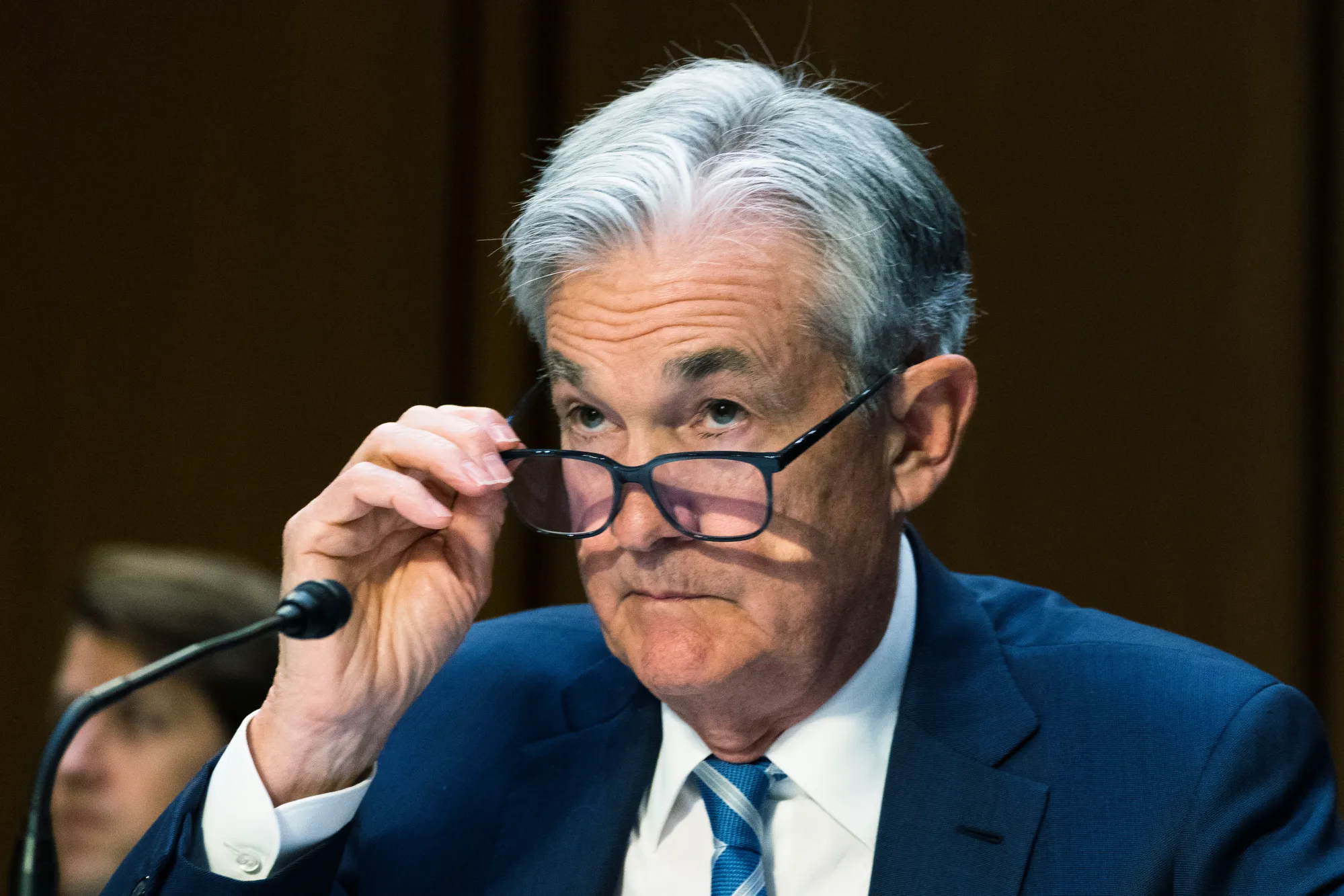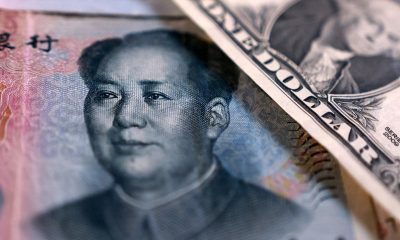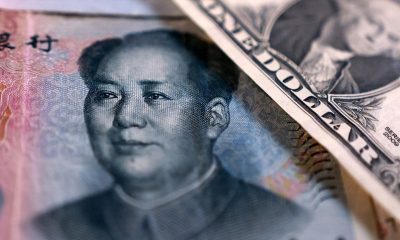Economy
Powell’s testimony, BOE meeting, Bitcoin – what’s moving markets

Fed chair Jerome Powell heads to the Senate later Thursday for the second day of his congressional testimony. The Bank of England is widely expected to tighten monetary policy once more, while Bitcoin stages a dramatic recovery.
1. Powell to climb Capitol Hill once more
Jerome Powell, the chairman of the U.S. Federal Reserve, is scheduled to address U.S. lawmakers again later Thursday, the second day of his semi-annual testimony.
He maintained a hawkish slant on Wednesday while speaking to the House Financial Services Committee, saying the outlook for two further 25-basis-point rate increases is “a pretty good guess” of where the central bank is currently heading.
However, the markets remain unconvinced, with a 25 bps hike largely expected next month but no further hikes after that.
Indeed, his colleague Raphael Bostic, the president of the Atlanta Federal Reserve, indicated that even a July increase would risk “needlessly” sapping the strength of the U.S. economy.
Powell is set to address the Senate Banking Committee later Thursday, and he has the opportunity to further direct the market’s thinking if he chooses to do so.
2. BOE to raise interest rates, again…
The Bank of England is the latest central bank to hold a policy-setting meeting, with another rate increase widely seen as a foregone conclusion later Thursday as the country battles with the highest inflation rate of the major economies.
Leading up to this meeting, the general consensus was that the BOE would raise rates to 4.75%, their highest since 2008, from 4.5%, the 13th consecutive rise in its most aggressive hiking cycle in more than three decades.
However, Wednesday’s shock inflation release has created the potential for a bigger half point increase, the first since February.
The Monetary Policy Committee is not scheduled to release any new forecasts in full until its next meeting concludes in August, but could use this gathering to warn about a darkening outlook for both inflation and growth.
3. Futures lower; tech sector under pressure
U.S. futures traded lower Thursday, with the tech sector under pressure after Fed chair Jerome Powell signaled further rate hikes ahead on the first day of his semi-annual testimony to Congress.
At 04:40 ET (08:40 GMT), the Dow futures contract had dropped 45 points or 0.1%, S&P 500 futures fell 9 points or 0.2%, and Nasdaq 100 futures dropped 45 points or 0.3%.
The three main equity averages closed lower Wednesday, the third consecutive negative session, with the tech-heavy Nasdaq Composite dropping 1.2%, its worst daily performance since early June.
This followed Fed chair Jerome Powell stating the central bank still has plenty of work to do to tame inflation, suggesting more rate hikes this year.
Powell appears before the Senate Banking Committee later Thursday, and investors will be looking to see if he offers any more clues about future Fed action.
Additionally, weekly jobless claims data are due later in the session and are expected to show a total of 260,000, while earnings are due from restaurant chain group Darden Restaurants.
4. Bitcoin hits two-month high
Bitcoin has soared to a two-month high this week, boosted by signs of increased institutional interest in the world’s largest cryptocurrency even as the sector faces increased regulatory scrutiny.
By 04:40 ET, Bitcoin traded 4.3% higher at $30,075, rallying past $30,000 for the first time since April, after posting gains of over 14% over the past three days.
The prime driver for this surge was last week’s news that BlackRock (NYSE:BLK), the world’s largest asset manager, plans to create a bitcoin exchange-traded fund, a move that would allow investors to invest in the asset class.
The global cryptocurrency industry had been in the doldrums after the U.S. Securities and Exchange Commission sued major crypto exchanges including Coinbase (NASDAQ:COIN) and Binance for alleged violations of securities laws, but interest from a company of BlackRock’s stature could well mean the tide is turning.
5. Oil slips lower; U.S. crude inventories provide support
Crude prices edged lower Thursday, handing back some of the previous session’s gains amid ongoing concerns over global demand growth.
By 04:40 ET, U.S. crude futures were 0.7% lower at $72.03 a barrel, while the Brent contract fell 0.7% to $76.58 per barrel.
Both benchmarks had gained a dollar a barrel in the previous session after the industry-funded American Petroleum Institute released data indicating that U.S. crude stockpiles dropped by more than 1 million barrels last week, reflecting some strength in demand at the world’s largest consumer.
Official inventory figures from the Energy Information Administration are due later on Thursday.
However, the market remains cautious with Fed Chair Jerome Powell signaling more rate hikes ahead this year and with ever present concerns over an economic recovery in China, the world’s largest crude importer.
Economy
Russian central bank says it needs months to make sure CPI falling before rate cuts -RBC


© Reuters. Russian Central Bank Governor Elvira Nabiullina attends a news conference in Moscow, Russia June 14, 2019. REUTERS/Shamil Zhumatov/File Photo
MOSCOW (Reuters) – Russia’s central bank will need two to three months to make sure that inflation is steadily declining before taking any decision on interest rate cuts, the bank’s governor Elvira Nabiullina told RBC media on Sunday.
The central bank raised its key interest rate by 100 basis points to 16% earlier in December, hiking for the fifth consecutive meeting in response to stubborn inflation, and suggested that its tightening cycle was nearly over.
Nabiullina said it was not yet clear when exactly the regulator would start cutting rates, however.
“We really need to make sure that inflation is steadily decreasing, that these are not one-off factors that can affect the rate of price growth in a particular month,” she said.
Nabiullina said the bank was taking into account a wide range of indicators but primarily those that “characterize the stability of inflation”.
“This will take two or three months or more – it depends on how much the wide range of indicators that characterize sustainable inflation declines,” she said.
The bank will next convene to set its benchmark rate on Feb. 16.
The governor also said the bank should have started monetary policy tightening earlier than in July, when it embarked on the rate-hiking cycle.
Economy
China identifies second set of projects in $140 billion spending plan


© Reuters. FILE PHOTO: Workers walk past an under-construction area with completed office towers in the background, in Shenzhen’s Qianhai new district, Guangdong province, China August 25, 2023. REUTERS/David Kirton/File Photo
SHANGHAI (Reuters) – China’s top planning body said on Saturday it had identified a second batch of public investment projects, including flood control and disaster relief programmes, under a bond issuance and investment plan announced in October to boost the economy.
With the latest tranche, China has now earmarked more than 800 billion yuan of its 1 trillion yuan ($140 billion) in additional government bond issuance in the fourth quarter, as it focuses on fiscal steps to shore up the flagging economy.
The National Development and Reform Commission (NDRC) said in a statement on Saturday it had identified 9,600 projects with planned investment of more than 560 billion yuan.
China’s economy, the world’s second largest, is struggling to regain its footing post-COVID-19 as policymakers grapple with tepid consumer demand, weak exports, falling foreign investment and a deepening real estate crisis.
The 1 trillion yuan in additional bond issuance will widen China’s 2023 budget deficit ratio to around 3.8 percent from 3 percent, the state-run Xinhua news agency has said.
“Construction of the projects will improve China’s flood control system, emergency response mechanism and disaster relief capabilities, and better protect people’s lives and property, so it is very significant,” the NDRC said.
The agency said it will coordinate with other government bodies to make sure that funds are allocated speedily for investment and that high standards of quality are maintained in project construction.
($1 = 7.1315 renminbi)
Economy
Russian central bank says it needs months to make sure CPI falling before rate cuts -RBC


© Reuters. Russian Central Bank Governor Elvira Nabiullina attends a news conference in Moscow, Russia June 14, 2019. REUTERS/Shamil Zhumatov/File Photo
MOSCOW (Reuters) – Russia’s central bank will need two to three months to make sure that inflation is steadily declining before taking any decision on interest rate cuts, the bank’s governor Elvira Nabiullina told RBC media on Sunday.
The central bank raised its key interest rate by 100 basis points to 16% earlier in December, hiking for the fifth consecutive meeting in response to stubborn inflation, and suggested that its tightening cycle was nearly over.
Nabiullina said it was not yet clear when exactly the regulator would start cutting rates, however.
“We really need to make sure that inflation is steadily decreasing, that these are not one-off factors that can affect the rate of price growth in a particular month,” she said.
Nabiullina said the bank was taking into account a wide range of indicators but primarily those that “characterize the stability of inflation”.
“This will take two or three months or more – it depends on how much the wide range of indicators that characterize sustainable inflation declines,” she said.
The bank will next convene to set its benchmark rate on Feb. 16.
The governor also said the bank should have started monetary policy tightening earlier than in July, when it embarked on the rate-hiking cycle.

 Forex3 years ago
Forex3 years agoForex Today: the dollar is gaining strength amid gloomy sentiment at the start of the Fed’s week

 Forex3 years ago
Forex3 years agoUnbiased review of Pocket Option broker

 Forex3 years ago
Forex3 years agoDollar to pound sterling exchange rate today: Pound plummeted to its lowest since 1985

 Forex3 years ago
Forex3 years agoHow is the Australian dollar doing today?

 Cryptocurrency3 years ago
Cryptocurrency3 years agoWhat happened in the crypto market – current events today

 World3 years ago
World3 years agoWhy are modern video games an art form?

 Commodities3 years ago
Commodities3 years agoCopper continues to fall in price on expectations of lower demand in China

 Economy3 years ago
Economy3 years agoCrude oil tankers double in price due to EU anti-Russian sanctions

























